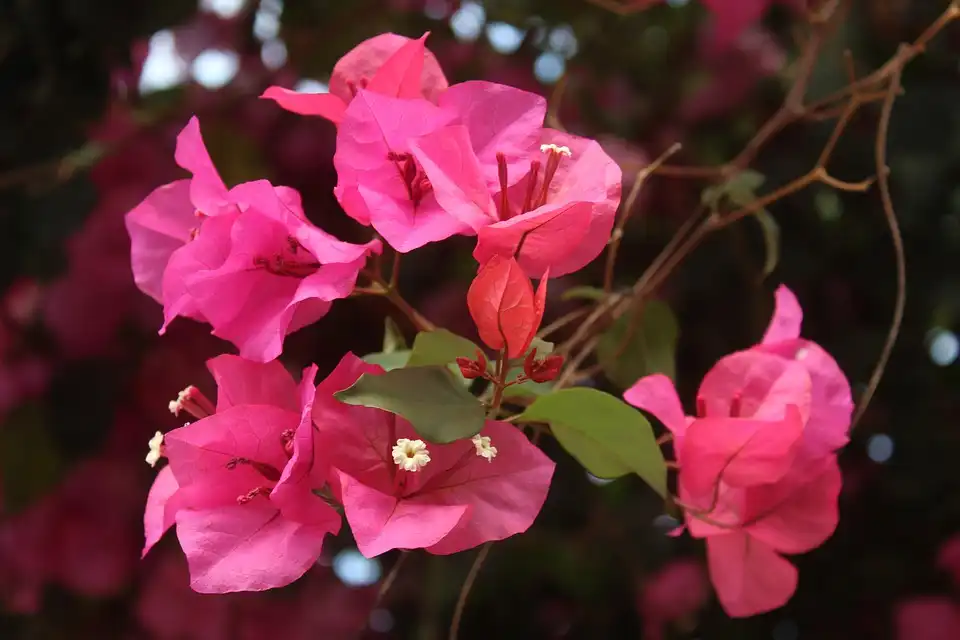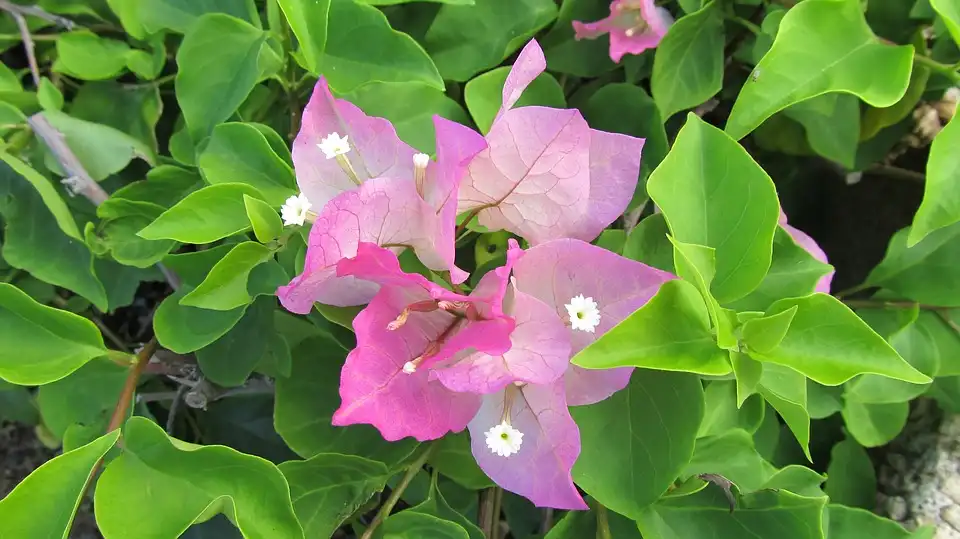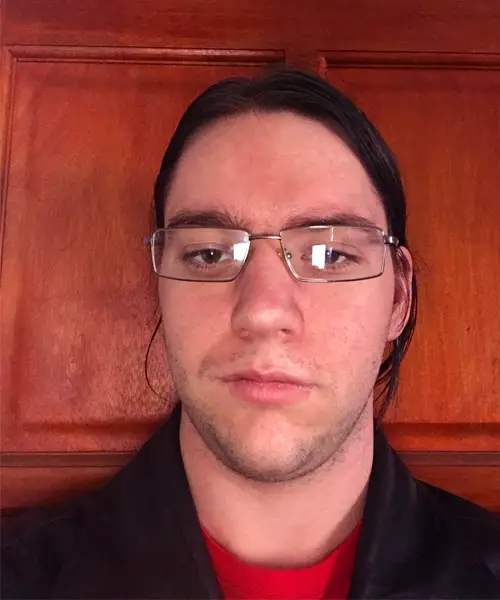Bougainvillea Peruviana Care Sheet
The bougainvillea peruviana is a beautiful tree to turn into a bonsai and grow yourself. While generally a large tree, the bonsai is easily manageable and can grow sufficiently with enough water and sunlight. A delicate yet hardy plant, we look at how to care for this species of bougainvillea.
This article explains the basics of caring for your bougainvillea peruviana, helping you keep it thriving. We’ll also explain the concerns to keep in mind if you want to grow this bonsai indoors.
Here are the topics we cover in this bougainvillea peruviana care guide:
Here are the topics we cover in this bougainvillea peruviana care guide:
01
02
03
04
05
06
Quick Bougainvillea Peruviana Bonsai Care Sheet
Here’s a quick guide to taking care of a bougainvillea peruviana bonsai.
Recommended soil
Loamy soil that drains well.
Watering
Water when you notice the topsoil is dry to the touch. When watering, water until the soil is slightly damp.
Potting season
When small, report every two to three years. Larger bonsais need repotting at least every five years depending on size.
Shaping and pruning season
Shape and prune during autumn and winter, do so sparingly in spring and summer to allow for blooming.
Light
Full day of direct sunlight.
Fertilizing
Fertilize every one to two weeks during spring and summer. If needed, use fertilizer sparingly during winter to keep the bonsai growing healthily. Use solid fertilizer at most once per month.
Propagation methods
Cuttings. For the best growth, do this during spring and summer.
Pests and diseases
Pest resistant when healthy. When unhealthy it can get attacked by aphids, powdery mildew, scales, caterpillars, mealybugs and white flies.
Growth patterns
Vegetive cycle for a few weeks before entering a several-week blooming period. Will remain in vegative growth if there is not enough sunlight present.
Flowering happens after strong growth caused by dryer weather.
Scientific Classification
- Family: Nyctaginaceae
- Genus: Bougainvillea
- Species: Bougainvillea peruviana
How to Care for a Bougainvillea Peruviana Bonsai
Bougainvillea peruviana are easy to care for as they’re generally resistant to pests and diseases while healthy. The most important aspects to take care of are watering and light, as without this, your tree will grow weaker. Care will prevent the tree from becoming vulnerable, leading to damage or death of the bonsai.
Best Soil
The best soil for growing a bougainvillea peruviana is loamy, well-draining soil. Alternatively, any standard soil that drains well will work fine. The most important aspect of the soil you use is that it must drain quickly.
If your soil retains water, it will damage the bougainvillea peruviana roots and make them susceptible to diseases and pests. This damage will also negatively affect its overall growth and flowering cycle.
Watering
Water your bougainvillea peruviana only when the soil is dry. Once you begin watering the bonsai, stop once the soil is thoroughly damp all over. To test whether it’s time for watering again, touch the soil to ensure that it’s dry enough.
Repotting
Repot a small bougainvillea peruviana every two to three years, paying particular attention while cleaning the roots. Bougainvillea roots are very delicate and can be brittle; carefully untangle them before cutting or removing the old soil.
Shaping and Pruning
Prune your bougainvillea bonsai during the autumn and winter seasons. This pattern will allow the plant to experience its growth cycle without any issues. If you need to, prune and shape lightly during the warmer seasons to prevent damaging any developing buds.
Ensure you sever the shoots after the tree has flowered. Leave two leaves on the shoots and prune the twigs carefully. If you plan to use wire for shaping, only adjust the younger branches as they won’t snap as quickly.
Location and Sunlight
This species grows best when placed outside in an area that can receive direct sunlight. The plant requires a minimum of five hours per day to survive but will grow best when receiving a full day of sun.
You may need to move the plant inside or cover it during winter to prevent any frost from developing and affecting your tree.
Fertilizing
Bougainvillea peruviana like to receive fertilizer. The nitrogen and phosphate ingredients are great for helping it develop flowers. Use a solid fertilizer once per month or a liquid one every one to two weeks. During winter, use a liquid fertilizer no more than once every two weeks.
Propagation Methods
Bougainvillea peruviana is mainly propagated from cuttings, which develop roots after four to six weeks. For best results, using semi-hardwood or roots as your cuttings will help the new tree develop faster. Alternatively, air-layering can work as a method to propagate this tree.
Pests and Diseases
While resistant to pests and diseases when healthy, the tree can quickly fall at risk of them once weak. Common pests that may attack your bonsai include aphids, mealybugs, caterpillars, whiteflies, scales, and powdery mildew.
Growth Patterns
Bougainvillea peruvianas have two stages of growth. The vegetative stage lasts several weeks and occurs when new stems and leaves grow. The flowering stage occurs as new flowers bud and develop, lasting for a couple of weeks.
Considerations for Growing an Indoor Bougainvillea Peruviana
Not all bonsais are suited for indoor growth. Often, the plants that will survive indoors with little care are hardy and ever-green. However, the bougainvillea peruviana is not like these plants and thrives outdoors for most of the year. If the plant grows too weak, it becomes vulnerable to pests and diseases.
Sunlight
The bougainvillea peruviana requires a full day of direct sunlight, making it hard to manage indoors. If you’re planning to grow this bonsai in your home, be ready to move it throughout the day to keep sunlight on it. Without this needed amount of sunlight, the tree will remain in a vegetative growth state and unlikely to blossom.
Constantly requiring sunlight will mean keeping it near a balcony that sees the morning or evening sun. Alternatively, keeping this plant near a convenient sun-facing window will ensure it receives at least a few hours of sunlight.
Temperature
Moving the bougainvillea peruviana indoors for winter if you’re in an area where it’s cold enough to snow is highly advised. The tree requires a constant temperature of at least 40° Fahrenheit. The bougainvillea peruviana will die if kept in cold weather for too long as it thrives in warm climates.
Common Issues When Caring for your Bougainvillea Peruviana Bonsai
The following two items are common issues you’ll likely face as you grow your bougainvillea peruviana. All of these problems are avoidable if you care for your bonsai carefully and take the necessary precautions.
Sunlight
The bougainvillea peruviana needs to be placed in an area that will receive direct sunlight for the whole day. While it can survive without this light level, it becomes less likely to leave the vegetative growth state and start flowering.
Sunlight becomes an issue during winter, especially if you live in the cold enough area to receive snow. The plant cannot survive in temperatures lower than 40° Fahrenheit. As such, you’ll need to move indoors if you don’t have a greenhouse to shelter it from the weather.
Overwatering
Be careful to avoid overwatering. If your soil isn’t well-draining enough, it’s easy to damage the plant’s roots by keeping them constantly moist. Before you water, touch the soil and ensure that it’s dry before hydrating the plant again.
Interesting Facts About Bougainvillea Peruviana Bonsai
The bougainvillea peruviana is as intriguing as it is beautiful. Here are four facts about this plant.
- The plant species was named and described by Humbold and Bonpland in 1808
- The tree has a loose and open branching habit
- Both the leaves and thorns are thin.
- By withholding water, you can force the plant to bloom early and more often.

FAQs About Bougainvillea Peruviana Bonsai
The following six questions are commonly asked by anyone attempting to grow a bougainvillea peruviana bonsai themselves. Here we’ll answer what soil you need, how to make a bougainvillea bloom more frequently, and how to wire the tree for optimal growth.
Caring for your bougainvillea peruviana bonsai is as easy as caring for any tree. With this species, it’s essential to ensure it gets a full day’s worth of sun and water when the topsoil is dry upon touch. Use fertilizer every two weeks as it grows, and ensure you prune it at least twice a year after it blossoms.
From cuttings, bougainvillea bonsais take root after four to six weeks. After this, it can take years to grow to the size you want, but you’ll have a starter for the bonsai after a month and a half of cultivation. Caring for the tree’s newly formed roots will allow it to grow, needing a repotting after two years.
The best soil for bougainvillea bonsai is well-draining loamy soil. This species of tree can quickly develop issues or diseases once it’s unhealthy. Water that lingers around the roots of this tree will damage them and negatively affect your plant.
Wiring helps style your bonsai tree. Begin by anchoring your wire to something sturdy; if possible, you can use the tree’s trunk. Trim your wire to make it easy to work with, then wrap the wire around the branch. Gently bend and move the branches, slowly putting them into the ideal position. Be careful as if you bend too far and too quickly, you risk breaking off the branch.
While this is possible, you will need to ensure you move the bougainvillea peruviana around your house during the day. The bonsai requires a full day of direct sunlight. It’s more worthwhile to be in a greenhouse or outside where it can receive the necessary sunlight. The species requires a constant temperature above 40 degrees F°.
One of the most common ways to make your bougainvillea peruviana bloom more is to withhold water. Doing this until the plant’s leaves begin to wilt will force it into blooming and creating seeds. However, this method is dangerous as it risks killing or damaging your tree.







